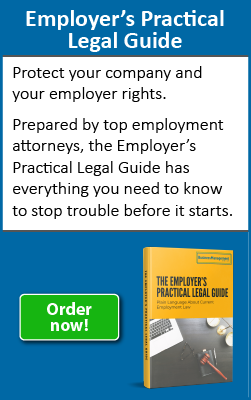Red alert: The 8 warning signs of violent employee behavior
When workplace violence occurs, employees may say their violent co-worker "just snapped." But, the truth is, people usually don’t snap.
They display warning signs long before they actually act out. The key is to talk to employees early in this "previolence" stage to offer assistance and/ or let them know their behaviors are unacceptable. Too many supervisors let things like threats and argumentative behavior slide until it’s too late.
"A lot of people think violence hasn’t occurred unless someone is bleeding, and that’s not true," says Dr. Dennis Davis, author of Threats Pending, Fuses Burning: Managing Workplace Violence.
Some in HR or management don’t confront such people because they fear that conflict will trigger violence or that they’ll become a target of the violence. Again, not true.
"Ignoring the individual will only encourage more violence because that person isn’t getting the reaction they want from you," says Davis. He suggests employers be on the lookout for workers who display any of these eight warning signs of violent behavior:
1. Fascination with weapons. That’s different than ownership of weapons. (Think Robert De Niro in Taxi Driver.)
2. Substance abuse. Research shows a big correlation between substance abuse and violence.
3. Severe stress. Stress is a function of modern society but people with a propensity toward violence allow that stress to become an excuse for violence.
4. Violent history. "Once people cross that moral, ethical or professional barrier into violence," Davis says, "it’s a lot easier for them to do it the next time."
5. Decreased or inconsistent productivity. Employees with a tendency toward violence have a harder time keeping a consistent level of productivity.
6. Social isolation and poor peer relationships. Loners are more likely to act violently because they don’t have a social network to work out problems.
7. Poor personal hygiene. These people have moved into the dangerous "I don’t care" phase.
8. Drastic changes in personality. It’s a myth that you need to watch out for ultra-shy or ultra-outgoing employees. Davis says, "You need to pay attention to the person who flip-flops between the two."
Best time to fire: 11:30 on Tuesdays
Dr. Dennis Davis says 11:30 a.m. on Tuesday is the best time to terminate someone with the least conflict because it:
- Allows you to use Monday to get the person’s last check, COBRA info, etc.
- Allows the employee the rest of week to look for a job (not stew over the weekend).
- Allows the employee to save face by walking out with the lunch crowd.







